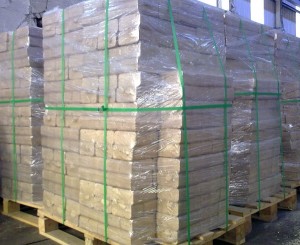The Advantages of LCL versus FCL When Shipping
February 4, 2013
LCL, or Less than Container Load, is a shipping service offered by many freight companies as a way of saving money and being more efficient. There are many advantages of LCL but is it really the best choice for you? Let’s look at the key issues when considering using LCL rather than FCL (Full Container Load).
Size
LCL is often recommended to companies that cannot fill a shipping container themselves, and so it is suggested that they share a container with others in a similar position to them. The aim of this is to save costs for everyone involved, but unlike FCL (which usually has a flat rate per container); LCL is charged by cubic metre.
Now, this is where choosing your shipping arrangements become complicated. If your products are too small or too large, you may be better served using alternative arrangements. For example, if your products take up less than 0.3 cubic metres, you may be better off using a parcel service. Likewise if your products take up more than 14 cubic metres it may be wiser to use FCL. This is because a 20 foot container has a volume of 32 cubic metres (of which 28 cubic metres are realistically usable), so although there may be unused space in the container, the overall cost is still lower than most LCL services. This economy of scale continues with 40 foot containers (67 cubic metre volume of which 63 cubic metres are usable) and 40 foot high cube containers (73 cubic metre volume of which 70 cubic metres are useable), however not all ports can accommodate these larger containers.
When considering the size of your products, you must also remember that the dimensions of the packaging (and any further packaging carried out on your behalf) are the values that are used to calculate the cost and this packaging can add up to 30% to each dimension. If your products are too delicate, or cannot be tightly packed and therefore takes up more space it will obviously affect the cost.

When using LCL, your shipment must be securely packaged.
Time
LCL is often in transit for a longer period of time, due to the freight company having to load and unload numerous companies’ items. It is also possible that your shipment will be delayed whilst the shipping company find enough items to fit the container. Therefore it is suggested that you should allow for 3 to 4 days either side of the shipping time in case of delays. However it does still mean that your goods are likely to arrive from China sooner, since you do not need to wait until you have enough stock to fill a full container alone. Therefore your supply chain suffers fewer bottlenecks, allowing your operations to run smoothly.
Other Transport
When shipping goods, you would usually rent a full container which is filled at your factory or warehouse before being taken to the shipping company, however with LCL this is not possible. This leaves you with two choices when considering how to get your goods to the container.
The cheaper option is likely to involve you bringing the goods to the shipping depot by your own means and then picking it up on the other side. However this requires your own transport vehicles, as well as flexibility when collecting because the containers estimated time of arrival cannot be exact.
The second option is to pay the shipping company to collect and deliver your goods, but of course this comes with extra charges that may cost more than arranging these services yourself.
Insurance
When shipping by LCL you are likely to be paying more towards insurance then you otherwise would with FCL. Although the difference in charges is not large, it can add up on the balance sheet as the common 1.5% cost of insurance when using FCL can rise to 3% or more when using LCL.
Conclusion
There are a number of key advantages of LCL if your shipment is relatively small and if speed of delivery is a key factor, but due to the nature of the service the payment structure can become complicated. This is because there are numerous rates, surcharges and tariffs which are then adjusted to the size of your shipment.
If you’re intending to ship a large amount of goods from China regularly, then it would be worth looking at FCL, as it enjoys greater economies of scale. However you may need to tweak your supply chain strategy in order to maximise the advantages of FCL, i.e. waiting longer between shipments to ensure the container is full or perhaps even increasing scale throughout the chain.
